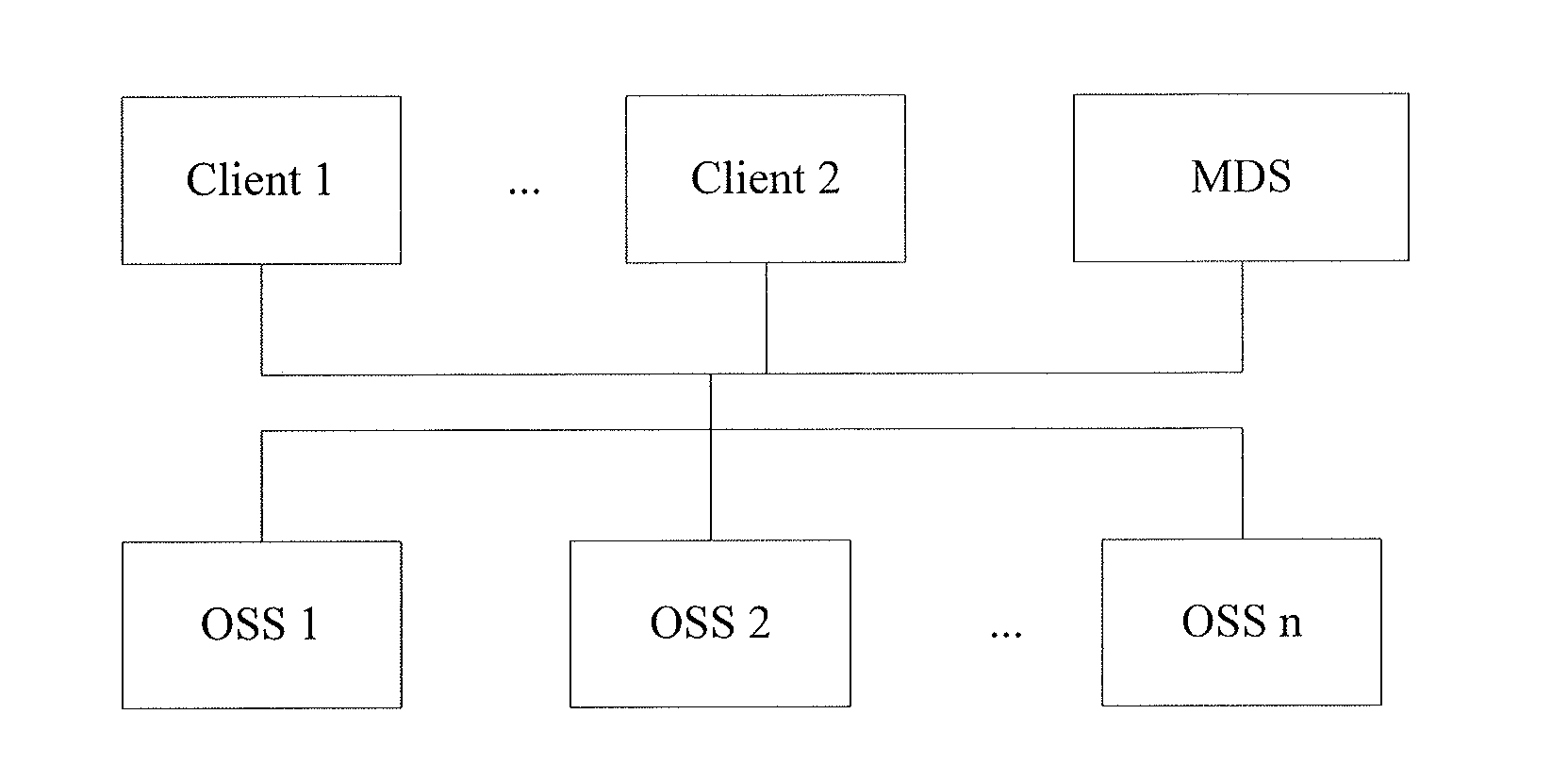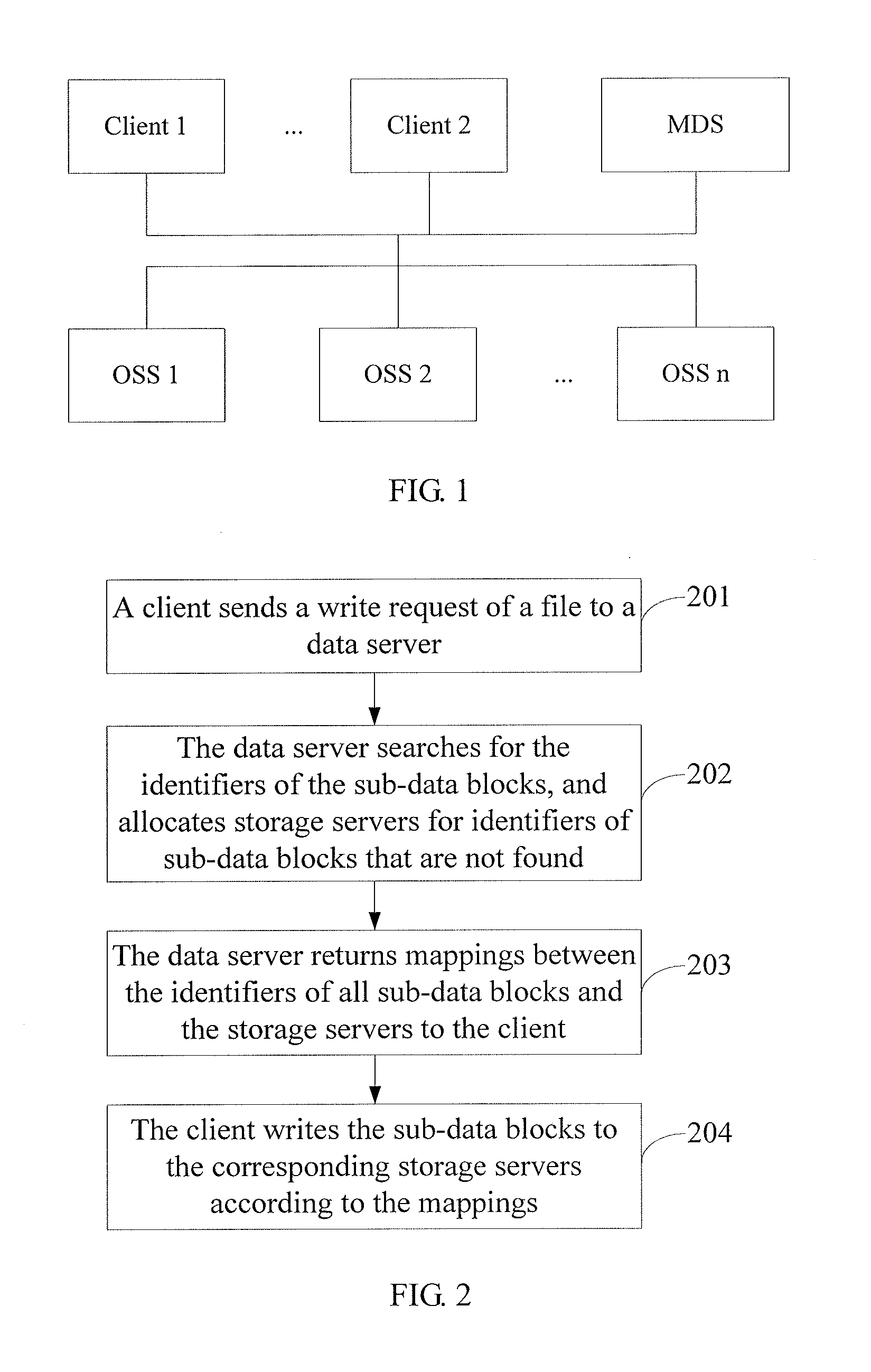Data operating method, system, client, and data server
a data operating method and data server technology, applied in the field of database technologies, can solve the problems of reducing the available occupying and large amount of duplicate data in the osss, so as to reduce the storage space of the system
- Summary
- Abstract
- Description
- Claims
- Application Information
AI Technical Summary
Benefits of technology
Problems solved by technology
Method used
Image
Examples
first embodiment
[0041]FIG. 2 is a flowchart of a data operating method based on a distributed file system. The method includes the following steps:
[0042]Step 201: A client sends a write request of a file to a data server.
[0043]The write request of the file includes identifiers of sub-data blocks constituting the file. Preferably, the identifiers of the sub-data blocks of the file include hash result values after a hash operation is performed on the sub-data block of the file.
[0044]Specifically, the file can be split according to a preset length to generate at least one sub-data block; after a hash operation is performed, the hash result value of each sub-data block is used as the identifier of the sub-data block; and the set of the identifiers of all sub-data blocks is used as the identifier of the file, and the identifier of the file is included in the sent write request of the file.
[0045]Step 202: The data server searches for the identifiers of the sub-data blocks, and allocates storage servers f...
second embodiment
[0059]FIG. 3 is a flowchart of a data operating method based on a distributed file system, illustrating how a client writes data to an OSS.
[0060]Step 301: After a local write operation, the client creates a complete file (File), and splits the file into n sub-data blocks, which are chunk-1, chunk-2, chunk-n, performs a hash operation on the sub-data blocks respectively, and obtains the identifiers of the sub-data blocks, which are h(chunk-1), h(chunk-2), h(chunk-n), thus establishing a mapping between the file and the sub-data blocks according to the identifiers of the sub-data blocks, that is, the identifier of the file, expressed by h(File)={h(chunk-1), h(chunk-2), h(chunk-n)}.
[0061]Step 302: The client sends a write request including the identifier of the file, h(File), to the MDS.
[0062]Step 303: After receiving the write request, the MDS searches for the identifiers of sub-data blocks in the established IMAP Tree according to the identifiers of the sub-data blocks included in th...
third embodiment
[0068]FIG. 4 is a flowchart of a data operating method based on a distributed file system, illustrating how a client reads data from an OSS.
[0069]Step 401: After receiving a read request of a file, the client searches, according to the file name, for the mappings between the file and the sub-data blocks established when the file is written, and sends the read request including the found mappings h(File)={h(chunk-1), h(chunk-2), h(chunk-n)} to the MDS.
[0070]Step 402: After receiving the read request, the MDS searches for the identifiers of sub-data blocks in the established IMAP Tree according to the identifiers of the sub-data blocks included in the identifier of the file.
[0071]Step 403: The MDS returns the queried OSS information to the client, that is, feeds back the mappings between the identifiers of the sub-data blocks and the OSS to the client.
[0072]Step 404: After receiving the OSS information, the client sends the read request including the identifiers of the sub-data blocks...
PUM
 Login to View More
Login to View More Abstract
Description
Claims
Application Information
 Login to View More
Login to View More - R&D
- Intellectual Property
- Life Sciences
- Materials
- Tech Scout
- Unparalleled Data Quality
- Higher Quality Content
- 60% Fewer Hallucinations
Browse by: Latest US Patents, China's latest patents, Technical Efficacy Thesaurus, Application Domain, Technology Topic, Popular Technical Reports.
© 2025 PatSnap. All rights reserved.Legal|Privacy policy|Modern Slavery Act Transparency Statement|Sitemap|About US| Contact US: help@patsnap.com



